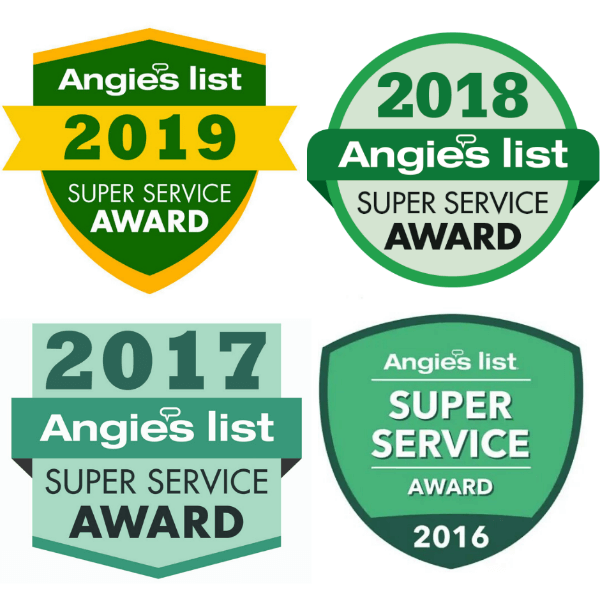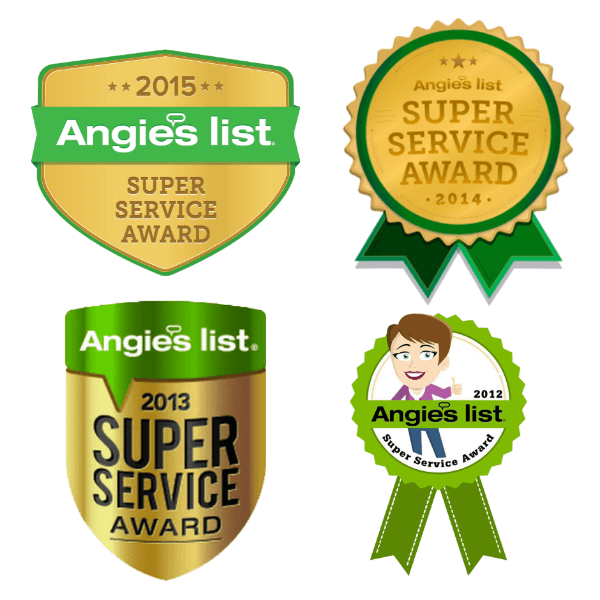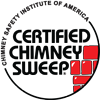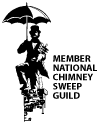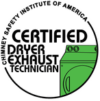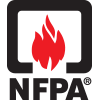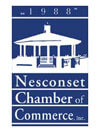Fireplace Information & Operation Tips & FAQs
Why do chimneys need to be regularly inspected and cleaned?
When wood burns, it creates a substance called “creosote”. Creosote builds up on the walls of the chimney over time. Creosote is flammable and must be removed to avoid a chimney fire. Rainwater penetration damage is also a major cause of chimney deterioration. Regular inspections are as important for your chimney as regular physical examinations by your physician or regular visits to your dentist. It’s vitally important to catch potentially hazardous conditions early! The National Fire Protection Association recommends an annual inspection and cleaning when necessary. As CSIA-Certified Chimney Sweeps, we can accurately advise you of any recommendations for servicing, usage and/or repair.
What causes creosote buildup?
The degree and severity of creosote varies from a fine powder to a non-removable tar-like substance. Creosote is created by the incomplete combustion of firewood. Low fire temperatures cause incomplete combustion. Low fire temperatures can be the result of unseasoned firewood, wet or soft firewood, intentional burning of firewood at a low temperature, or closing the combustion air supply to the fireplace before all of the wood is consumed
What is “unseasoned”, “wet”, and “soft” firewood?
Unseasoned firewood is wood that has not had the opportunity for the natural moisture in the log to evaporate. In order for this process to occur, the log needs to be split into halves or quarters and allowed to sit for six months to one year. Wet wood is firewood that has been stored outside and absorbed moisture from outside elements such as humidity, rain and snowfall. The ideal moisture content for firewood is between 15% and 25% moisture content. “Softwood” is a term used to describe certain types of wood that are “less dense” than other types of firewood.
How can I tell when firewood is properly “seasoned”?
Properly seasoned firewood will have a few easy-to-detect characteristics such as:
- The wood will appear discolored or gray.
- The wood will have natural cracks coming from the center to the outside of the log.
- The wood will not have a “freshly-cut” look.
What Kind Of Wood Is Good To Burn?
Wood such as Oak, Cherry, Ash, Mulberry, Hackberry and other types of hardwoods are good to burn in your fireplace. All wood has the same Btu potential per pound. Hardwoods are more dense (they have less airspace in between the wood cells) than softwoods, therefore, there is more wood to burn in a piece of hardwood as opposed to a piece of softwood. A good rule of thumb is that if the tree produces a berry or a fruit, it is considered “hardwood”. NEVER burn driftwood in a fireplace or a wood-burning stove as it has a high salt content that may cause damage and corrosion to your system!
What about the logs I see for sale at the supermarkets, convenience stores and hardware stores?
Logs such as Duraflame, etc. can be burned in a fireplace. They have been tested to burn cleaner than regular firewood. The logs are usually made from compressed sawdust, copper sulfate and paraffin wax. Although they burn cleaner, some fireplace users dislike the odor that the wax creates. NEVER burn more than one of these logs at a time in a fireplace and NEVER burn these logs in a wood burning stove.
Is my chimney clogged if it smokes into my home?
Generally speaking, no. Some of the most common causes for smoke backing up into the home are:
- The damper is not locked in the fully open position.
- The wood is unseasoned, wet or soft and cannot create enough heat to cause the smoke to rise properly into the chimney.
- The walls of the chimney are cold, not allowing the smoke to rise properly.
- The house has a negative pressure problem.
How can I keep this from happening?
- Make sure the damper is locked open before starting the fire.
- Make sure that you are using seasoned firewood.
- If the chimney walls are cold, light a piece of loosely rolled newspaper and place it near the damper. This will push heat into the chimney, creating the proper draft.
- Make sure you start your fire with kindling (small pieces of woods and twigs) before you add the big logs to your fire.
- Have an annual inspection conducted by a CSIA-Certified Chimney Sweep!
Is there anything else I can do to burn wood more safely?
Yes. There is much more to burning wood than just throwing anything into the fireplace and striking a match. Many household items, when burned, can create toxic fumes. NEVER burn garbage, trash, painted lumber, treated lumber, construction scraps, your Christmas Tree or large amounts of paper in your fireplace. It is always best to burn only wood in your fireplace. You may wish to go to your local library and obtain information on the proper wood burning procedures. Always wear protective gloves when around the fireplace and never set anything on the hearth area – it may catch fire from radiated heat. When removing ashes from your fireplace, store them OUTSIDE in a metal container on a non-combustible (metal or concrete) surface and away from a combustible wall. Ashes can remain hot and can cause a fire for SEVERAL DAYS after they are removed.
What does a chimney cleaning consist of?
As CSIA-Certified Chimney Sweeps, we follow a Six-Step Cleaning Process, in which we clean the entire system from the fireplace up. This includes the firebox, smoke chamber, smoke shelf, and flue. We then check the system for any visible problems. If necessary, we use our closed circuit video inspection camera to evaluate the interior of the system.
Do you clean out ash pits?
No. Cleaning ash pits is considered homeowner’s maintenance.
Will cleaning my chimney get dust all over my house?
Absolutely Not! We use a professional, heavy-duty vacuum system designed specifically for dust control, and we guarantee no dust. You have our personal guarantee that we will not leave a mess in your home.
How often do I need to have my chimney cleaned?
The chimney should be checked after 1/2 cord (a “rick”) to 1 cord of wood has been burned in your system. A “cord” of wood is 4′ high x 4′ wide x 8′ long. A “rick” of wood is 1/2 that amount. The National Fire Protection Association recommends having your system inspected and cleaned annually, and as necessary.
How long does it take to sweep a chimney?
A typical sweeping can take anywhere from forty minutes to over an hour, depending on the type of chimney and the construction of the system.
Can Repairs Be Completed At The Time Of Sweeping?
It depends on the type of repair needed and our schedule for that day.
What is the difference between a factory-built fireplace and a masonry fireplace?
 Factory-built fireplaces are built in a factory and installed on-site from UL-listed components, while a masonry chimney is constructed on-site by brick masons. A factory-built chimney has a metal flue pipe system to vent smoke out of the house. Factory-built fireplaces are smaller and some have blowers built in to push heated air into the room. All factory-built fireplaces are UL-listed for safety and efficiency. The factory-built chimney is typically enclosed in a wooden chase covered by a metal cap to prevent water penetration. A termination cap is also typically provided on top. A benefit of factory-built fireplaces is that a damaged, factory-built fireplace can be removed and replaced with a new unit at a lower cost than a masonry system.
Factory-built fireplaces are built in a factory and installed on-site from UL-listed components, while a masonry chimney is constructed on-site by brick masons. A factory-built chimney has a metal flue pipe system to vent smoke out of the house. Factory-built fireplaces are smaller and some have blowers built in to push heated air into the room. All factory-built fireplaces are UL-listed for safety and efficiency. The factory-built chimney is typically enclosed in a wooden chase covered by a metal cap to prevent water penetration. A termination cap is also typically provided on top. A benefit of factory-built fireplaces is that a damaged, factory-built fireplace can be removed and replaced with a new unit at a lower cost than a masonry system.
 A masonry chimney is built on site using brick, mortar and clay flue tiles for liners. It is typically more expensive to build and to maintain. Most masonry chimneys do not have chimney caps installed, which means water, leaves and animals can get inside of the structure and sometimes inside of your home. However, we can easily install a chimney cap on your masonry chimney.
A masonry chimney is built on site using brick, mortar and clay flue tiles for liners. It is typically more expensive to build and to maintain. Most masonry chimneys do not have chimney caps installed, which means water, leaves and animals can get inside of the structure and sometimes inside of your home. However, we can easily install a chimney cap on your masonry chimney.
Factory-built fireplaces are not any safer than masonry fireplaces – they are just different. Both types of fireplaces can provide years of warmth and enjoyment for you and your family.
Diagrams courtesy and copyright of CSIA
Click here to schedule an appointment online.
Learn more about us and our extensive service area, then give us a call.








